Conservation & Prescribed Burns
For more information about conservation, please contact us.
What is Lincoln Marsh doing to restore the natural landscape?
What’s all this ‘smoke’ about restoration?
At the Wheaton Park District’s Lincoln Marsh Natural Area, we are not only here to help you enjoy and appreciate the many wonders of nature, we’re also working to preserve and restore the habitats that our native plants and animals need to thrive and survive.
Why is it important to restore native habitat and wildlife?
People often ask us, “Why can’t nature just take its course?” Human beings have always played a part in shaping the natural environment. Native Americans used to start prairie fires in order to obtain food or travel. The first settlers sliced through the prairie with steel plows and discovered the soil to be perfect for growing crops. On that same land today, we build houses, highways, shopping malls, and subdivisions, and our natural world has suffered a lot of stress in that process!
By restoring a natural community, we allow plants and animals (this includes us!) to live together with health, balance, and beauty.
At the Lincoln Marsh, we are working hard to protect native diversity by monitoring and managing our natural area, removing non-native and invasive species, and reintroducing native plants.
What does “native” mean, anyway?
Native plants and animals are those that were present in this place before any settlers interacted with the prairies, woodlands, and wetlands. These species are well-suited to the soils, temperatures, and environments of Illinois. Many of our remaining natural areas are filled with plants and animals that quickly spread and permeate a disturbed space but are not necessarily indigenous or considered to be “high-quality.”
Some of these non-native plants and animals are even “invasive,” which means that they grow and reproduce so aggressively that they crowd out the native plants and animals that have lived here for thousands of years. Ecologists shudder at the sight of these unwelcome invaders!
How does restoration happen?
Sometimes we remove non-native plants manually–by hand or by machine. Other times a small dose of pesticide is necessary. Many times, the course of restoration calls for a technique that has been happening for many years. The very process that has shaped our landscape… Fire.
Once the area is cleared of unwanted plant species, we can plant or sow seeds for the natives. And once the native plants are in place, the native wildlife will find them!
Prescribed Burns: A Prescription for Habitat Health
Fire and Habitat Health
In the Chicago region, fire is a natural and essential ingredient of healthy native ecosystems. Throughout history, lightning sparked natural fires, performing a “house cleaning” function for nature. Oak woodlands and prairies are adapted to fire and depend on it to maintain their unique character.
Fire helps local habitats thrive by:
- Releasing nutrients from burned plant materials.
- Helping seeds to grow.
- Opening the woodland floor to sunlight so that native wildflowers and plants can flourish.
Restoring a Natural Cycle
In an effort to restore the natural fire cycle, forest preserve districts and other agencies use controlled burns that are carefully watched and tended. Trained ecologists burn parts of the woods, wetlands, and prairies every few years to clear out weedy plants that choke out burr oaks and other native trees and wildflowers. The work is helping to bring back diverse communities of plants and animals, and creating dynamic, attractive, and safe natural areas for people to enjoy.
Planning and Conducting Controlled Burns
Each spring and fall, land managers conduct controlled burns, also known as prescribed burns, at several sites in the Chicago region. Before a burn, trained personnel survey the burn site and create a detailed plan of action. Then they carefully monitor the weather and wait until conditions are right, minimizing the chance that smoke will blow towards houses and roads. During burn seasons, staff also take care to inform neighbors of their plans so that people with health concerns can avoid the smoke.
Benefits
Following a controlled burn, the reinvigorated natural areas provide habitat for wildlife and increase air and water quality in the region.
The information on prescribed burns has been provided by Chicago Wilderness.
Chicago Wilderness
The Wheaton Park District is a member of Chicago Wilderness, a regional alliance comprised of over 250 public and private organizations. Members work together to study, restore, protect, and manage the natural ecosystems of the region, contribute to the preservation of global biodiversity, and enrich local resident’s quality of life. The members of Chicago Wilderness work together to develop and implement a variety of restoration, research, education, planning, and policy projects to achieve the common goal of biodiversity conservation.
What can I do?
Explore the Outdoors!
By learning to love the natural world, you will be well-primed for taking care of it. Beyond this, you can become a “citizen scientist” by reading about and observing these natural areas, plants, and animals. The more you see, the better you can assist your local scientists and land managers.
Transform your backyard into a haven for local butterflies, birds, and other wildlife.
Visit the Conservation Foundation for information on how to transform your yard through their Conservation@Home Program. You’ll be amazed at how your own property can be transformed into a rich display of wildlife!
Go Green
Below are some simple, everyday ways to contribute to a greener planet and save money while doing it!
Save Energy
- Set your thermostat a few degrees lower in the winter and a few degrees higher in the summer.
- Install LED light bulbs.
- Turn off lights and televisions when not in use.
- Use a smart power strip or unplug appliances when you’re done with them.
- Wash clothes in cold water.
- Use a drying rack or clothesline to dry your clothes.
Save Water
- Turn off the water when you brush your teeth.
- Take shorter showers.
- Install a low-flow showerhead and toilet.
- Landscape with native plants.
- Install a rain barrel on your property.
Eat Smart
- Buy locally grown fruits and vegetables.
- Buy locally raised, humane, and organic meat, eggs, and dairy.
- Eat lower on the food chain.
- Plant a garden and use a compost bin.
Skip the Bottled Water
- Use a water filter to purify tap water.
- Use a reusable water bottle, preferably aluminum, when traveling or at work.
Think Before You Buy & Shop Smart
- Go online to find new or gently used secondhand products. Check out websites like Craigslist and Freecycle or join some Facebook garage sale groups to track down furniture, appliances, and other items that are gently used, low cost, or free.
- Check out garage sales and thrift stores.
- Buy food in bulk to save money and packaging.
- Wear clothes that don’t need to be dry-cleaned. If you must dry clean, locate one that uses fewer chemicals.
- Invest in high-quality, long-lasting products.
- Borrow when you can and check out your local library for books and movies.
- Use a reusable bag whenever you shop.
Keep Electronics Out of the Landfills.
- Keep your cell phones, computers, and other electronics as long as possible.
- Donate or recycle them responsibly when the time comes. E-waste contains mercury and other toxics and is a growing environmental problem.
Make Your Own Cleaning Supplies.
You can make very effective, non-toxic cleaning products from a few simple ingredients such as vinegar, baking soda, and water. Making your own cleaning products saves money, time, and packaging – not to mention improves indoor air quality.
Educate Yourself and Spread the Word…
Additional Online Resources
Where can I learn more about conservation and going green?
- Forest Preserve District of DuPage County
- The Conservation Foundation – View the Conservation Foundation volunteer advisory council’s list of the Best Places for Nature Rx (PDF)
- Chicago Wilderness
- Illinois Department of Natural Resources
- Illinois Environmental Protection Agency
- Illinois Audubon Society
- US Fish and Wildlife Service
- National Wetlands Inventory
- National Public Lands Day
- Earth911 Making Everyday Earth Day
- SCARCE: School and Community Assistance for Recycling and Composting Education
- Earth Hour

